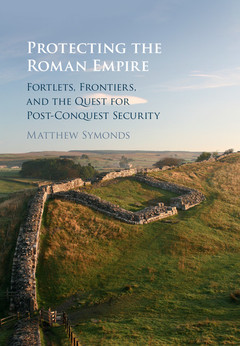Description
Protecting the Roman Empire
Fortlets, Frontiers, and the Quest for Post-Conquest Security
Author: Symonds Matthew
The fortlet, a previously overlooked military installation type, reveals how Rome built, secured, and lost its Empire.
Language: English
Approximative price 114.03 €
In Print (Delivery period: 14 days).
Add to cart
Publication date: 12-2017
Support: Print on demand
Support: Print on demand
Description
/li>Contents
/li>Biography
/li>
The Roman army enjoys an enviable reputation as an instrument of waging war, but as the modern world reminds us, an enduring victory requires far more than simply winning battles. When it came to suppressing counterinsurgencies, or deterring the depredations of bandits, the army frequently deployed small groups of infantry and cavalry based in fortlets. This remarkable installation type has never previously been studied in detail, and shows a new side to the Roman army. Rather than displaying the aggressive uniformity for which the Roman military is famous, individual fortlets were usually bespoke installations tailored to local needs. Examining fortlet use in north-west Europe helps explain the differing designs of the Empire's most famous artificial frontier systems: Hadrian's Wall, the Antonine Wall, and the Upper German and Raetian limites. The archaeological evidence is fully integrated with documentary sources, which disclose the gritty reality of life in a Roman fortlet.
1. Introduction; Part I. Consolidating Conquest: 2. Waterways; 3. Highways; Part II. Border Control: 4. Hadrian's Wall; 5. The Antonine Wall; 6. The Upper German and Raetian limites; Part III. Provincial Collapse: 7. Late highways; 8. Late waterways; 9. Imperium by Outpost; Bibliography; Index.
Matthew Symonds is the editor of Current Archaeology magazine and a fellow of the Society of Antiquaries of London. He has published widely on Roman frontiers.
© 2024 LAVOISIER S.A.S.




